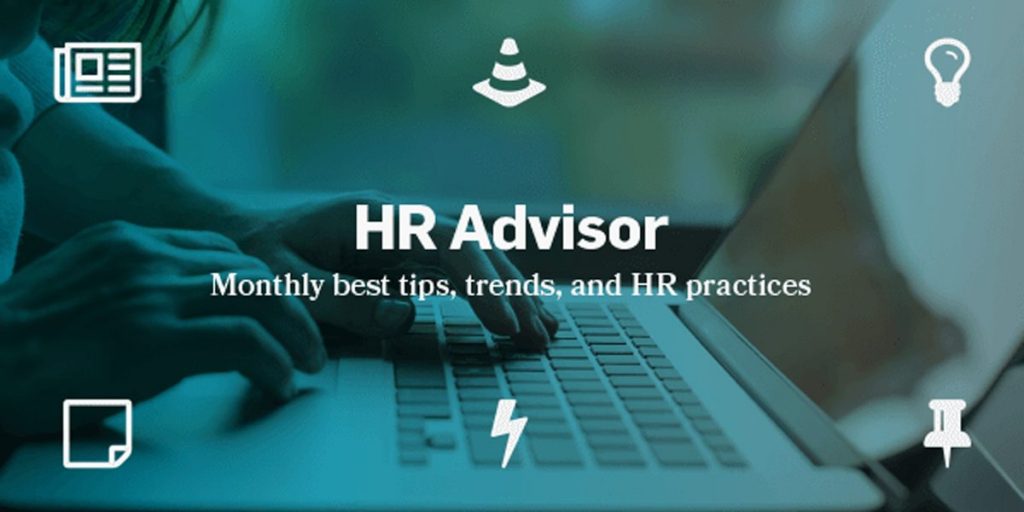You’re reading the February 2019 edition of the HR Advisor Newsletter. This month we cover the epidemic of loneliness in the workplace and what employers can do about it, remind you about OSHA reporting, and bring you up to speed on the latest news concerning a minimum salary increase for exempt employees. Thank you for reading!
There’s a Loneliness Epidemic in the Workplace – Here’s How Employers Can Help
Right now, in workplaces across the country, people are going about their jobs, seemingly content, but deep down feeling the ache of loneliness. They aren’t necessarily working alone or all by themselves with no one to talk to. They may be chatting amicably with customers on the phone or in person. Or they may work from home, but are in frequent communication with their coworkers through digital channels. Whatever the case, these lonely workers feel isolated and unnoticed.
Given all the means that people have at their disposal to connect with each other in the workplace – face-to-face meetings, email, social media, messaging apps – one might have expected loneliness in the workplace to be diminishing. Unfortunately, the number of communication channels hasn’t helped. Although technology may have increased the quantity of connections people have in the workplace, it hasn’t improved the quality of those connections.
Why It Matters at Work
The rate of American adults who report suffering from loneliness has doubled since the 1980s – it’s now at about 40%. Vivek Murphy, who served as Surgeon General from 2014 to 2017, has called loneliness an epidemic, and the negative health effects of loneliness explain why: it can lead to reduced life expectancy, limited performance and creativity, and impaired reasoning. According to Harvard Business Review, lonelier workers “perform more poorly, quit more often, and feel less satisfied with their jobs.” They report fewer promotions, more job switching, and lower job satisfaction.
To make matters worse, lonely employees are sometimes perceived to be less approachable, less committed, and less trustworthy. In turn, these perceived qualities obstruct communication, collaboration, and teamwork. A person’s loneliness can lead to misperceptions and misjudgments that ripple through a workplace – it’s a classic downward spiral.
But there is some good news! According to Gallup, people who have a best friend at work “are seven times as likely to be engaged in their jobs, are better at engaging customers, produce higher quality work, have higher well-being, and are less likely to get injured on the job.” In contrast, “those without a best friend in the workplace have just a 1 in 12 chance of being engaged.” Gallup found that the single best predictor of higher well-being and engagement was “not what people are doing – but who they are with.” The takeaway for employers: “small increases in social cohesiveness lead to large gains in production.”
What Employers Can Do
Employers can’t take away the loneliness employees feel or make friends for them, but they can have a positive impact by helping to make it easier for lonely employees to be noticed and find friends at work. Here are four things employers can do:
- Realize that people in your organization may be lonely. Loneliness doesn’t always manifest itself in ways that you’re likely to notice amid the hustle and bustle of your daily activities. You can, however, get a sense for whether loneliness is an issue by observing whether some (or many) employees seldom socialize with others or don’t seem to have close friends at work. Remember, though, that not everyone socializes the same way, and not everyone may want a friend at work. As an employer it’s not your job to ensure that everyone has a work buddy, but you should provide an environment where building friendships is possible.
- Make room for friendships to grow. Friendships take time and energy to develop and maintain, and employees will only be able to make friends if they have time and energy to do so. If they’re overwhelmed with responsibilities from the start of the work day until its end, they won’t be able to make meaningful connections at work. Step one for many employers will be to ensure that work is not taking place at such a break-neck pace that employees barely have time to get a cup of coffee, let alone have a meaningful conversation with a coworker. This is a good practice not only because helping employees foster friendships is the right thing to do, but also because it will reduce turnover and increase engagement. Breaks have also been shown, time and again, to increase overall productivity. Setting aside break areas away from where people need to focus on work can be helpful, as can encouraging a culture in which employees know it’s fine, within limits, to socialize with one another during the work day. You can also look for ways to bring people from different teams together, such as multi-team lunches or as part of multi-team collaborations; employees might find that there are people on other teams with whom they feel a real connection.
- Create traditions for people to get to know one another. These are especially important for new employees who don’t yet know anyone. Obviously, you will introduce new employees to the team, but do so over a span of time and make sure there are follow-up opportunities for people to build on these initial introductions. Sending new employees to lunch or happy hour with just two or three others is a great way to help them make some quick connections that are deeper than a handshake and exchange of job titles. Mentorship programs, monthly social events, and group volunteer efforts are other ways to get people talking outside their typical work environment. But these opportunities need to arise often enough that employees can get beyond small talk and start to feel like they actually know one another.
- Offer an employee assistance program. Feelings of loneliness often go hand-in-hand with depression, anxiety, and stress. Creating space to make friends at work won’t necessarily solve these deeper issues, but you may be able to provide resources to help employees improve their mental state overall. Employee Assistance Programs (EAPs) give employees access to expert, confidential assistance for a range of issues such as mental health conditions, substance abuse, relationship troubles, and financial problems. These services are provided through an EAP Provider, which connects employees with the appropriate resources and professionals.
The workplace can be a lonely place, and when it is, people and productivity can suffer. By raising awareness about workplace loneliness and taking steps to create an environment in which people can easily make friends, employers can help bring the benefits of friendship to their employees and to themselves.
 HR Alerts
HR Alerts
Reminder: OSHA 300A Forms Must Be Posted by February 1 and New Final Rule Released
The Occupational Safety and Health Administration (OSHA) mandates that all employers who are required to maintain the OSHA 300 Log of Work-Related Injuries and Illnesses post a summary of the previous year’s log between February 1st and April 30th each year, even if no incidents occurred in the preceding calendar year. The summary (OSHA Form 300A) must be certified by a company executive and posted in a conspicuous location where notices to employees are customarily posted.
All employers who had more than ten employees at any point during the last calendar year are covered by this requirement unless they qualify as part of an exempt low-risk industry. A full list of the industries exempt from OSHA routine recordkeeping requirements (including posting Form 300A) can be found in the Guides section of the HR Support Center by searching “partially exempt industries.” It’s called “OSHA Fact Sheet: Reporting and Recordkeeping Rule and Partially Exempt Industries List.”
The OSHA Log of Work-Related Injuries and Illnesses (Form 300), Summary (Form 300A) and Instructions can be found in the Forms section of the HR Support Center by searching for “OSHA Form 300.” It’s called “OSHA Form 300, 300A, 301, and Instructions.”
Electronic submission requirements:
OSHA-covered employers with 250 or more employees, and those in certain high-risk industries with 20-249 employees, must electronically report their Calendar Year 2018 Form 300A data by March 2, 2019. Reporting must be done through the online Injury Tracking Application (ITA).
All affected employers must submit injury and illness data in the ITA online portal, even if the employer is covered by a State Plan that has not completed adoption of their own state rule.
Additional information, covered-employer criteria, FAQs, and the Injury Tracking Application can be found on OSHA’s site, here.
New Final Rule Regarding Electronic Submission of Form 300 and Form 301
OSHA recently published a Final Rule to amend its recordkeeping regulations to remove the requirement to electronically submit information from the OSHA Form 300 (Log of Work-Related Injuries and Illnesses) and OSHA Form 301 (Injury and Illness Incident Report) for establishments with 250 or more employees that are required to routinely keep injury and illness records. These requirements were never enforced but are now officially off the books.
 Did You Know?
Did You Know?
As you may recall, a new minimum salary for exempt employees almost took effect in December of 2016. The minimum salary of $23,660 per year was set to increase to $47,476 per year, but a last-minute ruling from a federal judge put that all on hold. While the Department of Labor (DOL) would likely have fought for their new rule under a Democratic administration, the Trump administration took over just a few months later, and the new rule was effectively laid to rest. Due to the nature of the court system, however, the earlier increase isn’t completely dead. If the DOL does not create another new rule before Trump leaves office, the $47,476 minimum could come roaring back to life.
Knowing that the 2016 rule could rise again and that $23,660 (set in 2004) is no longer a reasonable number, the DOL under President Trump has been taking steps – albeit slow ones – to come up with a less drastic rule. Pre-rulemaking has been underway for a year and half, and in March we expect to see the actual proposed rule published for public comment.
Given the rate of inflation since 2004 and the number the current Secretary of Labor suggested during his confirmation hearings, we anticipate that the proposed rule will include a minimum salary for exempt employees between $30,000 and $35,000 annually. If a new rule is made, it’s unlikely that it would take effect before spring of 2020, and employers will almost certainly have at least six months’ notice to make the necessary changes.
Anchor Payroll
350 Clark Drive
Suite 310
Mt Olive, NJ 07828
Additional Contacts
Phone: 800-660-7089
Email: info@anchorpays.com



